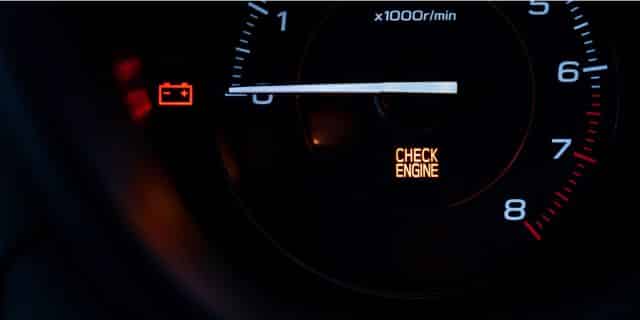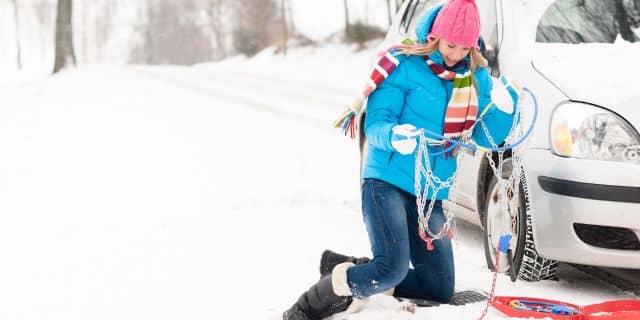
by California Casualty | Helpful Tips, Homeowners Insurance Info |
If clutter has crept into every corner of your home, spring is your golden opportunity to clear it out and start fresh. This season isn’t just about cleaning—it’s about creating space for what truly matters. Whether you’re dreaming of tidy shelves, organized closets, or just a little more breathing room, these smart decluttering tips will help you reduce the mess and refresh your mindset.
Where to Start
The clutter didn’t happen overnight—and it won’t disappear overnight either. That’s okay! Decluttering is a process, not a race. Here’s how to get started:
- Pick one clutter hotspot—a shelf, drawer, or closet. Starting small builds momentum.
- Set a timer for 15, 30, or 60 minutes—whatever works for you. This helps keep you focused and prevents burnout.
- Take before-and-after photos. You’ll be amazed at the progress, and it’ll keep you motivated.
- Enlist help. A friend or family member can make the process more fun—and help you decide what stays and what goes.
- Create a home inventory. As you declutter, jot down big-ticket items or anything valuable. It can come in handy for insurance purposes.
Want a broader strategy? Check out our blog on Easy Ways to Declutter Your Home. For now, here are room-by-room tips to guide your spring-cleaning mission.
General Decluttering Tips
Use the Four-Box Method: Label boxes or bins as Trash, Give Away, Keep, and Relocate. Sort items accordingly.
- Clear surfaces: Flat spaces attract clutter. Find permanent spots for items or consider letting them go.
- Ditch the broken stuff: If it’s beyond repair (like a broken umbrella or snapped sunglasses), it’s time to toss it.
- Let go of guilt items: If you’ve been holding on to something out of guilt—not love—donate it.
Entryway
Clear the catch-all zone: This area often becomes a drop zone. Use bins, hooks, or a small table to keep it tidy.
- Sort the mail daily:
- Open and sort as soon as you walk in.
- Create a system for bills, items to respond to, and recycling.
- Avoid the dreaded mail mountain!
Kitchen
Spices: Toss any older than a year. No scent = no flavor.
- Refrigerator and freezer: Discard expired or mystery items.
- Cookbooks: Keep only your go-to favorites. Donate the rest.
- Takeout menus and condiments: Menus are online; sauces don’t last forever—ditch the extras.
- Appliance manuals: Recycle any available manuals online. Organize your appliance warranties.
- Specialty appliances: If you haven’t used it in the past year, it may be time to let it go.
- Under the sink:
- Organize essentials within reach.
- Relocate overflow items to a closet or garage shelf.
- Drawer clutter: Use dividers for utensils, tools, and gadgets.
- Mugs: Keep your favorites. Donate duplicates.
Bathroom
Clear containers: Transparent acrylic bins let you see what you have.
- Sort by category: Hair, dental, skincare, first aid—group like with like.
- Makeup:
- Mascara: Replace every 3 months
- Foundation/Concealer: Replace annually
- Lipstick, eyeshadow, blush: Replace every 2 years
- Donate unused items in good condition.
- Medications:
- Dispose of expired or unidentifiable meds safely. Local police stations often have drop-off bins.
- Eyewear: Donate old prescription glasses and frames.
Bedroom
Clothing
- Organize by type: Lay out all jeans, skirts, or shirts. Keep what you love, donate the rest.
- One-year rule: Haven’t worn it in a year? It’s probably time to part ways.
- Donation bin: Keep a labeled bin in your closet so it’s easy to add items as you go.
Shoes and Socks
- Toss worn-out or single shoes.
- Donate pairs you haven’t worn in a year.
- Bye-bye, lonely socks! Toss any that don’t have a match.
Playroom
- Toys:
- Donate those your child has outgrown.
- Toss games with missing or broken parts.
- Crafts:
- Contain supplies to a shelf or bin.
- Use small containers or drawer organizers for easy access.
- Prevent duplicate purchases by taking inventory.
- Artwork:
- Display your child’s favorites.
- Repurpose others as wrapping paper or recycle.
Office
Receipts:
-
- Scan important ones and toss the rest.
- Remember: thermal paper isn’t recyclable.
- Cords and chargers:
- Sort, label, and get rid of the mystery wires.
- Make sure your extension cords are in good working order.
- Files and papers:
- Shred what you no longer need.
- Store important documents in labeled folders.
Books: Keep the ones that hold sentimental value or that you plan to reread. Donate the rest.
- Remote controls: Recycle the ones you no longer use.
- Media: Donate or sell CDs, DVDs, and other outdated formats.
Old paint: If it’s dried out or more than a few years old, it’s probably time to toss it (check local disposal guidelines).
- Tools:
- Hang them on utility racks or pegboards.
- Organize by type and label for easy access.
- Boxes: Go through those mystery boxes—keep what matters, recycle the rest.
Keep Clutter from Coming Back
One-in, one-out rule: For every new item you bring in, donate or discard one.
- Daily donations: Give away one item per day—365 things gone in a year!
- Avoid unnecessary freebies: Don’t bring home samples or giveaways unless you’ll use them.
- Think before bulk buying: Only stock up on what you actually use regularly.
- Reusable bags: Store them in your car so you don’t keep collecting new ones.
- Evening reset: Take five minutes before bed to clear surfaces and put things back where they belong.
Spring is the perfect time to not only declutter but to reevaluate your protection at home. A clean, organized home paired with the right insurance coverage provides the ultimate peace of mind.
This article is furnished by California Casualty, providing auto and home insurance to educators, law enforcement officers, firefighters, and nurses. Get a quote at 1.866.704.8614 or www.calcas.com.

by California Casualty | Helpful Tips, Homeowners Insurance Info |
Imagine catching a leaky roof before it becomes a flood or spotting a crack in the foundation before it threatens your home’s stability. A yearly home maintenance inspection empowers you to identify small issues early, saving you time, money, and headaches. With a simple checklist and a little effort, you can keep your home in tip-top shape and avoid costly surprises down the road. Use this list as your guide to stay ahead of potential problems.
Gather Your Supplies
- Binoculars (for roof inspection)
- Flashlight (for inspecting dimly lit spaces)
- Ladder (to reach roofs, gutters, and higher areas)
- Electrical tester (to check outlets and circuits; ask your local hardware store for guidance)
- Moisture meter (to detect hidden dampness)
- Screwdriver set (for tightening fixtures and covers)
- Smartphone or camera (to document areas of concern)
- Notepad and pen (for notetaking and listing repairs that need to be made)
- Conduct a visual inspection of your roof from the ground with binoculars. If necessary, climb the ladder to get a closer look.
- Look for missing or damaged shingles, rusted or damaged flashing around vents, chimneys, or skylights.
- Check for signs of moss or algae and debris accumulation.
- Clear any debris from clogged gutters and downspouts. Check that your gutters, gutter guards, and downspouts are in good condition.
- Make sure the downspouts direct water away from your foundation.
- Look under your roof from inside the attic for water stains, wet insulation, or visible leaks.
Exterior: Siding, Windows, and Doors
- Inspect siding for cracks, warping, or peeling paint.
- Look for crumbling stucco, brick, or loose mortar.
- Check where two materials (like siding and brick) meet. These areas are prone to water infiltration.
- Examine caulking and weather stripping for cracks or gaps. Check seals for drafts or moisture buildup.
- Test windows and doors to ensure they open and close smoothly without sticking.
Foundation and Grading
- Walk the perimeter of your home. Check that the ground slopes away from the foundation to prevent puddles of standing water.
- Look for cracks, bulges, or other structural concerns. Small hairline cracks are normal, but large gaps or shifts require professional attention.
- Monitor retaining walls for signs of leaning or crumbling.
Walls, Ceilings, and Floors
- Inspect interior walls and ceilings for discoloration, bubbling paint, or peeling wallpaper.
- Look for cracks above doors or windows, which could indicate the foundation settling.
- Check floors for unevenness, soft spots, or squeaks.
- Look for stains or damage that may signal underlying issues.
- Pay extra attention to beams, joists, and trusses for structural damage.
Basement, Attic, and Crawl Spaces
- Look for signs of moisture or mold. Check walls and floors for dampness or mildew.
- Ensure attic insulation is intact and not blocking vents.
- Make sure there are no signs of pests.
- Examine floor joists and roof supports for sagging, cracking, or insect damage.
- Verify that crawl spaces are free of standing water and adequately ventilated.
HVAC System
- Test heating and cooling systems. Turn them on to check for unusual sounds or odors.
- Replace air filters and clean vent covers.
- Inspect the furnace and air conditioning units for rust, leaks, or wear.
- Verify that bathroom and kitchen exhaust fans vent to the exterior and are free of debris.
Electrical System
- Test outlets with an electrical tester.
- Inspect the electrical panel for scorch marks, loose wires, or burning smells.
- Replace batteries in smoke and carbon monoxide detectors and test that they work.
- Secure loose outlet covers and check visible wiring for fraying or damage.
Plumbing System
- Check faucets, showerheads, and toilets for leaks, drips or corrosion.
- Check for loose handles or connections.
- Test water pressure and observe how quickly sinks and tubs drain.
- Inspect under sinks and around toilets for water stains, dampness, or mold.
Appliances
- Garbage disposal: Clean thoroughly and check for blockages.
- Water heater: Flush to remove sediment and extend its lifespan.
- Refrigerator and freezer: Clean coils and empty drip trays.
- Fire extinguishers: Check the pressure gauge and expiration date.
If you’re not comfortable doing a home inspection yourself, consider hiring a professional home inspector. This typically costs about the same as when you hire an inspector to check out a home you’re going to buy. When you are ready to make repairs, and you cannot do them yourself, make sure to hire a reputable contractor.
Finally, your home is one of your greatest investments. Be sure to protect it with the right insurance for added peace of mind.
This article is furnished by California Casualty, providing auto and home insurance to educators, law enforcement officers, firefighters, and nurses. Get a quote at 1.866.704.8614 or www.calcas.com.

by California Casualty | Auto Insurance Info, Helpful Tips, Safety |
Age may bring wisdom, but it also comes with new challenges behind the wheel. From adapting to changing reflexes to navigating the latest technology in cars, senior drivers face unique hurdles. If you are a senior driver, or know one, here are simple tips to help stay safe and confident on the road.
How does age affect your driving?
As we get older, changes in our bodies can affect how safely we drive. Stiff joints, muscle weakness, or arthritis can make it harder to turn your head, press the brakes, or react quickly in traffic. If you’ve lost some feeling in your fingers or feet, it might slow down your reaction time or make it harder to stay in control of the car. Vision changes can make it tough to see at night or read road signs quickly, and hearing loss might mean you don’t notice important sounds like sirens or horns. On top of that, some medications can cause drowsiness, dizziness, or slower reactions, which can all affect your driving.
Tip #1: Stay on top of your health.
- Regularly check your vision, hearing, and mobility to ensure they’re not affecting your ability to drive safely. Minimize distractions, such as loud music or other sounds, to help you hear important traffic cues like horns or sirens.
- If you have limited mobility, consider vehicle modifications. For example, hand controls can replace traditional gas and brake pedals if leg movement is a challenge. Consult with your doctor and an occupational therapist to explore your options.
- Be mindful of how medications impact driving. Avoid driving if you’re taking anything that causes drowsiness or lightheadedness.
Tip #2: Make sure your car is the right fit for you.
- If it’s an option, select larger dials and easy to read symbols on your car’s dashboard. Turn brightness up on your instrument panel so it is easy to see.
- Adjust your seat so you’re not sitting closer than 10 inches to the steering wheel. Make sure your feet can easily press the pedals, without your having to reach with your toes. Pedal extensions are available for those who need it.
- Check out the CarFit program sponsored by AAA, AARP Driver Safety, and AOTA (American Occupational Therapy Association). This program can help educate you on ways you can make your car more comfortable and safer as you age.
Tip #3: Understand your car’s safety technology.
- Check your owner’s manual to determine the advanced safety technologies in your vehicle. This may include blind spot monitoring, automatic braking, lane-keeping assist, rearview camera, automatic crash notification, navigation, and more.
- Seek help from tech-savvy family or friends who can explain features and help you practice. Watch online tutorials—many car manufacturers offer easy-to-follow videos on their websites or YouTube channels. You can also ask your dealer for a demonstration when servicing your car.
- If new tech seems overwhelming, take it slow. Practice one new feature at a time to get comfortable with it. Start with the safety features like blind spot monitors. Don’t get discouraged as it can take time to learn new technology.
Tip #4: Drive safely and defensively.
- Maintain a safe following distance. Avoid tailgating and give yourself plenty of space to react to sudden stops or changes in traffic. This is especially important in bad weather or heavy traffic.
- Drive at a comfortable speed. Stick to the speed limit and, if you prefer driving slower, stay in the right lane to let faster traffic pass safely.
- Stay focused and alert. Avoid distractions like using your phone, eating, or multitasking while driving. Never drink and drive and be mindful of any medications that might impair your ability to focus.
Tip #5: Avoid driving certain times of the day or night.
- If driving at night feels difficult or uncomfortable, try to avoid it. Similarly, be cautious around sunrise and sunset when glare from the sun can impact your visibility.
- Refrain from driving when you’re stressed, tired, or not feeling alert. Skip rush hour or heavy traffic areas to reduce stress and risk.
- Avoid driving in rain, snow, ice, or other challenging weather conditions. Consider using rideshare services, public transportation, or asking for a ride from friends or family during these times.
Tip #6: Know how to deal with night driving.
- Make sure your headlights, taillights, windshield and side windows are clean.
- Allow for more space between you and the car in front to allow for additional stopping room – it’s harder to judge speed and distance in the dark.
- If headlights of oncoming vehicles are too bright, look down and to the right. It will help deflect the light and you can use the right side of the road as your guide.
- Do not wear sunglasses or tinted lenses at night. It reduces the amount of light that reaches your eyes and can make driving hazardous.
Tip #7: Take advantage of available support.
- Refresh your knowledge of driving rules with a program like AAA’s RoadWise Driver Course. Completing the course may even qualify you for a discount with certain insurance providers.
- Consider hiring a driving rehabilitation specialist. These professionals assess key factors such as muscle strength, flexibility, reaction time, and decision-making skills to help ensure safe driving.
- Talk to trusted friends and family about your driving. Their honest feedback and support can help you identify areas for improvement and give you confidence behind the wheel.
Tip #8: Is it time to stop driving? Know the warning signs.
- Be alert for warning signs such as multiple accidents, near-misses, or new scrapes and dents on the vehicle. Pay attention if you have received two or more tickets or warnings within the past two years.
- Watch for signs of erratic, unsafe, or aggressive driving from your loved one, or if you’re the driver, for times you felt out of control.
- Take seriously any recommendation from a doctor to change driving habits or stop driving altogether.
- Approach the conversation with your loved one with empathy, focusing on positivity and support. Together, you can explore alternative ways to maintain their freedom and connection to the world around them.
Finally, make sure your car is fully protected for added peace of mind. Safe travels.
This article is furnished by California Casualty, providing auto and home insurance to educators, law enforcement officers, firefighters, and nurses. Get a quote at 1.866.704.8614 or www.calcas.com.

by California Casualty | Helpful Tips, Homeowners Insurance Info |
Is your house trying to tell you something? From mysterious knocks to unsettling creaks, the noises in your home could be more than just background sounds—they might be early warnings of bigger issues. Listen closely, because ignoring these whispers from your walls could cost you more than a good night’s sleep.
Heating and Cooling Systems
Unusual sounds from your HVAC (heating, ventilation and air conditioning) system might mean that it’s struggling. Get these issues checked before you lose heat during the frigid winter months or cooling relief during the hottest time of year.
- Squeaking or Squealing: Bearings in the motor may need oiling or a piece could be broken. You also could have a worn-out or misaligned fan belt. Ignoring this sound can lead to motor failure, so address this soon.
- Whistling: This could be the sign of air leaks in the ductwork or a dirty air filter. Try replacing the filter first and see if the sound disappears. Filters should be replaced every three months.
- Grinding: Moving parts aren’t operating smoothly or it could be worn-out bearings in the motor. Get that checked out.
- Popping: This can indicate moisture or a clog in the gas line. It also could be expansion or contraction of the ductwork, especially when turning on the heat.
- Clanking or Banging: This happens in air handlers or furnaces due to rusted or chipped metal, or soot buildup.
- Clicking: A malfunctioning electrical relay could create a clicking sound.
- Boiler Knocking: The circulation pump may be failing.
- Hissing: This could signal a leak in the refrigerant line, or there could be an internal valve leak. The compressor pressure also could be too high.
- Gurgling: You could be low on refrigerant or have a coolant leak.
- Booming: There could be airflow issues where the ducts connect.
- Buzzing: This sound could be caused by loose wiring, a failing motor, or capacitors that are malfunctioning.
- Rattling: There may be loose parts within your unit, such as screws or fan blades.
Appliances
Unusual noises from appliances with motors might mean a mechanical problem. Homeowner warranties usually cover this type of issue.
- Humming Dryer: Your clothes dryer could have an object caught in its blower.
- Buzzing Refrigerator: The refrigerator could have an ailing compressor.
- Grinding Dishwasher: If your dishwasher sputters or grinds, something could be stuck in its chopper blade.
- Popping or Rumbling Water Heater: Water heaters operate almost silently, so if you hear sounds, don’t ignore them. Popping or rumbling could be due to sediment buildup on the bottom. It means it’s struggling to operate and might fail. You may need to flush the inside of the tank.
- Noises from Gas Appliances: Don’t wait on gas appliances that are making noises. This may indicate a leak that could be serious.
Plumbing and Pipes
You want your plumbing and pipes to work properly. Water can cause significant damage if problems aren’t addressed in a timely manner.
Clanking: This sound could be a steam radiator that is not draining properly. It also could indicate a loose pipe. Get that fixed, as loose pipes moving around could lead to burst pipes.
- Banging or Thumping: This is caused by water changing direction or being brought to a sudden halt. Usually, it doesn’t cause problems, but the sound can be annoying. You can buy a water hammer arrestor for appliances that reduce the noise.
- Gurgling Toilet: This could indicate a plumbing backup somewhere. It could be a partially clogged drain, a problem with the flush value, a buildup of sediment in the tank, or inadequate venting in the plumbing system. You will want to call a plumber sooner than later.
- Dripping: Water leaks inside a wall can lead to mold or mildew and can destroy insulation. Try to isolate where the dripping sound is coming from. Get professional help as needed.
- Water Loss Test (water meter): If you cannot find the leak, try a water loss test. Look at the water meter and write down the reading. Stop all use of water in your home for 30 minutes. Do not flush the toilet or use the sink, tub, shower, dishwasher or washing machine. Turn off the ice maker and sprinkler. Then check the water meter at the end of the half hour. If the reading is unchanged, you do not have a leaky pipe. You could have a leaky toilet or appliance.
- Water Loss Test (well water): If you have well water, you won’t have a water meter to check. Stop all water use and stand near your water pump for 30 minutes. Listen for clicking sounds from the pump which could indicate a water leak.
Lights and Outlets
The lights and outlets in your home are connected to the electrical system. When components of this system fail, it not only is frustrating but could be dangerous.
- Humming, Buzzing, Hissing, Crackling or Popping (light switches and outlets): Buzzing is the sound of electricity arcing across a bad connection. If you hear buzzing from your light switch or outlet, or a hissing/crackling/popping sound, stop using it immediately and call an electrician.
- Humming, Buzzing, Whining (bulbs or dimmers): If a fluorescent bulb is making the noise, it means a ballast likely needs to be replaced. That is the part that controls the voltage to the bulb. If the dimmer is making the noise, replace it. You can also try changing the bulb as some bulbs work better with dimmers.
Walls, Ceilings & Windows
Unexpected sounds from above or behind the walls might mean unwanted guests. Noises from your windows could signal hidden openings. Both could translate to expensive repairs if not addressed.
- Skittering: This is the sound of critters in your home: raccoons, squirrels, birds, and even insects. The longer they are there, the more damage they can do, from chewing through wiring and insulation to giving birth to babies. When these animals die in your walls, they also cause an awful lingering odor. Take note of when you hear the sounds. Rodents are nocturnal. Call an exterminator. Be sure to search and seal the openings that allowed critters into your house or more could follow.
- Buzzing: If you hear a buzzing sound in your walls, it could indicate a colony of bees making their nest there. Carpenter bees are especially known to do lots of damage by burrowing in your wood. Contact a professional pest removal service to safely get rid of this hazard.
- Creaking and Squeaking (floors): These sounds could be the house settling, or they could be caused by temperature changes that result in the wood boards rubbing against each other. However, when the squeaking is accompanied by sagging or gaps in the floor, you will want to consult a professional.
- Whistling (windows): Whistling sounds could point to improper installation, worn weather stripping, or poor seals. Check the seal around your windows for signs of wear, and caulk or reseal as needed.
- Rattling (windows): Something is not fitting quite right if you hear rattling. Get it checked out as this could lead to cracks in the glass.
Your home is your greatest investment. Keep up with winter home maintenance and protect your home with the right insurance for added peace of mind.
This article is furnished by California Casualty, providing auto and home insurance to educators, law enforcement officers, firefighters, and nurses. Get a quote at 1.866.704.8614 or www.calcas.com.

by California Casualty | Auto Insurance Info, Helpful Tips |
You are miles from nowhere when suddenly, your headlights dim, your dashboard flickers, and your car starts losing power. No, it’s not a scene from an action thriller—it’s a sign that your alternator might be failing. But how do you know when it’s time to replace it? Let’s break down the signs before your car breaks down on you.
What is an alternator?
The alternator is a small but mighty component responsible for keeping your battery charged and your vehicle’s electrical systems running smoothly. It converts kinetic energy into electrical energy. That energy charges your car’s battery so that it can start and also powers your car when running. Over time, wear and tear can reduce the alternator’s efficiency, preventing it from fully charging the battery. While there’s no exact timeframe for replacement, alternators typically last between 100,000 and 150,000 miles. It’s risky to drive a car with a bad alternator. It can leave you stranded.
Bad battery or bad alternator?
Since the alternator and battery work closely together, sometimes the signs you are seeing could mean you need to replace the battery and not the alternator. Consider the age of both parts and their condition. The average battery life is 3-5 years, so if your battery hasn’t been replaced in that long, check that first.
Signs of a bad battery:
- Your vehicle is hard to start or won’t start at all.
- You hear a clicking noise when trying to start the car, or it takes longer for the engine to catch.
- You notice dim or flickering headlights, taillights or dashboard lights.
- Your car consistently has a dead battery. This could also be due to a bad alternator.
Signs of a bad alternator:
- You notice dim or very bright headlights. (This is due to the inconsistent flow of electricity generated by the alternator.)
- Your vehicle doesn’t start.
- Your lights and gauges dim, and then your car stalls when driving.
- There is a warning light on your dashboard.
- You notice a burnt rubber smell and/or loud grinding noise.
Do you have a multimeter? That’s a surefire way to know if the alternator is failing. When the car is not running, check the voltage at the battery. It should be between 12 and 12.5 volts. Then check the voltage again when the car is running. The voltage level should increase between 13.5 and 14.5. If the voltage does not increase, the alternator is bad. If it does increase, yet you are still experiencing some of the issues listed above, then it is likely that the battery is bad.
How to Replace the Alternator
You can certainly take your car to your mechanic for an alternator replacement. However, if you’re handy and have some experience working on cars, here is a guide to replacing your alternator.
Pro tip: take photos of each piece before disconnecting them so you know how to hook everything back up.
Check Your Vehicle’s Manual: Identify the type of alternator you need and purchase it.
- Gather Your Supplies: Get a socket and wrench set, gloves, safety glasses, and a memory saver. A memory saver provides a small current to preserve your car’s electronics and prevent the need for reprogramming; it typically plugs into the power port.
- Backup Electronic Data (if needed): Refer to your manual to determine if backing up preset electronic data from your car’s computer is necessary.
- Turn Off the Engine: Shut off your car’s engine and put on your safety gear.
- Disconnect the Battery: Remove the negative cable from the car battery. Disconnecting the positive cable is optional.
- Loosen the Belt Tensioner: Release the tension on the serpentine belt and remove it. Inspect the belt for wear and tear, replacing it if needed.
- Remove Alternator Attachments: Disconnect all cables and bolts securing the alternator, including the voltage regulator connector, the alternator’s positive cable, the brace nut and bolt, and the lower mounting bolt.
- Replace the Alternator: Remove the old alternator and install the new one in the same position.
- Reassemble: Reattach all previously disconnected components.
- Test Voltage: If available, use a multimeter to ensure the voltage reads between 13.5 and 14.5 volts when running.
Maintaining Your Alternator
You also can take steps to reduce the wear and tear on your alternator and keeping it working at its best.
- Schedule regular maintenance and ask your mechanic to check the alternator every time. Regular maintenance also will help your car last longer.
- Regularly clean your alternator to remove dirt, grease, and debris. These can cause it to overheat.
- Tighten loose connections that can affect the alternator’s performance.
- Look out for fluid leaks around the alternator. Fluid and oil buildup can shorten an alternator’s lifespan. Identify the source of the leak as soon as possible. (Usually, it’s not the alternator that is leaking.)
- Keep your belts in good condition. Worn belts can loosen the alternator mountings.
- Be careful with aftermarket electronics. Improperly installing them can overload the alternator.
- Maintain and replace your battery as needed so that you will know that it’s not the battery if your vehicle’s electrical system fails.
Finally, the right coverage for your vehicle is important for added peace of mind. Schedule an annual review with your insurer to make sure your vehicle is fully protected. Safe travels.
This article is furnished by California Casualty, providing auto and home insurance to educators, law enforcement officers, firefighters, and nurses. Get a quote at 1.866.704.8614 or www.calcas.com.

by California Casualty | Auto Insurance Info, Helpful Tips, Travel |
You’re ready to hit the road, but your car has other plans—stuck in a snowbank with tires spinning. Before your frustration gets out of hand, take a deep breath. With the right techniques and a little patience, you can free your vehicle and get back on track. Here’s your step-by-step guide to escape the snow’s icy grip without breaking a sweat—or your car!
1. Stay Safe and Assess the Situation
Before doing anything, ensure you’re safe. Turn on your hazard lights and assess the situation. Are other vehicles nearby? Make sure you’re visible to others and have enough space to work around your car safely.
2. Clear the Exhaust Pipe
Check your car’s tailpipe for snow and ice. A clogged exhaust can cause dangerous carbon monoxide to back up into the vehicle’s cabin. Clearing it is a critical safety step before you start working to free your car.
Use a shovel or any sturdy tool to remove snow around the tires, under the car, and along the path you want to travel. Clearing as much snow as possible will make it easier to gain traction and move forward.
4. Try Melting the Snow
If the snow around your wheels is packed and icy, try sprinkling salt or a de-icing agent. Be cautious, as salt can cause rust on your vehicle, and some chemicals may be harmful to pets and the environment.
5. Add Traction
Improve your grip by spreading dry materials like sand, kitty litter, or even your car’s floor mats under the tires. These items can provide the friction needed to get your car moving.
Pro Tip: Lower your window slightly to listen for spinning wheels as you press on the gas. If you hear them spinning, it’s not working.
6. Choose the Right Driving Technique
Depending on your type of vehicle, you will want to take advantage of its strengths.
-
-
- 4-Wheel Drive: If your vehicle has a 4-wheel drive option, turn it on to deliver power to all wheels. Use a low gear in an automatic to reduce wheel spinning.
- Front-Wheel Drive: Turn your steering wheel left and right repeatedly to find a patch of traction.
- Manual Transmission: Start in second gear to reduce wheel spin and increase grip.
7. Turn Off Traction Control
Your traction control system can prevent your wheels from spinning, which helps in skids but can hinder your efforts when stuck. Temporarily disable it to give your wheels the power they need to move.
8. Rock Your Vehicle
Gently rock your car by shifting between forward and reverse gears. Apply light gas pressure—avoid flooring it—and stop if it’s not working after a few tries to prevent transmission damage.
9. Let Air Out of Your Tires
In extreme cases, slightly deflate your tires to increase surface contact and improve traction. Only do this if you’re near a place to reinflate them, as driving on underinflated tires can be dangerous.
10. Call for Roadside Assistance
If all else fails, it’s time to call for help. Roadside assistance professionals have the tools and expertise to safely free your vehicle.
After You’re Unstuck
Once your car is free, pull over in a safe spot and inspect your tires. Spinning wheels can pack snow and ice into the treads, making steering difficult. Use a snow scraper to clear them and restore proper grip. Don’t forget to turn your traction control back on before resuming your drive. Follow winter driving safety tips to prevent any future issues.
Be Prepared for the Future
Getting stuck in deep snow can damage your car’s transmission, battery, or drivetrain. Get your car checked out if you have been stuck in deep snow.
In addition, prepare for any future incidents. Keep a winter emergency kit in your vehicle, including:
- Ice scraper and snow brush
- First aid kit
- Flashlight and flares
- Blankets
- Tire pressure gauge
- Car jack
- Cell phone charger
- Kitty litter or sand for traction
Finally, make sure your vehicle is protected for winter with the right insurance. This will help add peace of mind. Safe travels.
This article is furnished by California Casualty, providing auto and home insurance to educators, law enforcement officers, firefighters, and nurses. Get a quote at 1.866.704.8614 or www.calcas.com.






